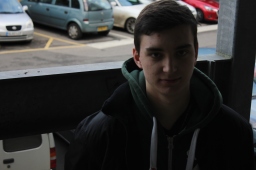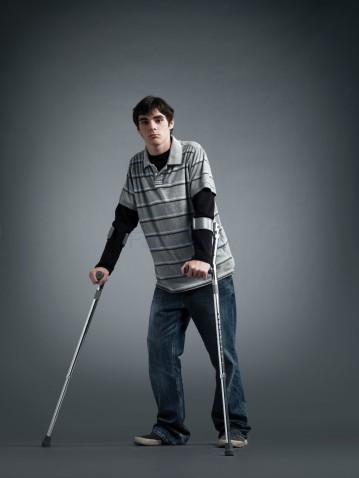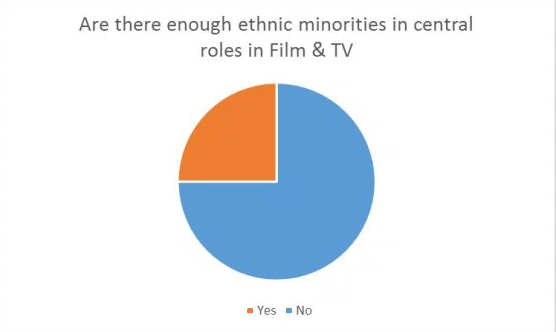In this post I’ll be documenting the process I went through on my “Hello” project. The brief was to create a scene that reflected genre by only the look and feel of the scene without using any dialogue.
Here is my production schedule:
 Genres:
Genres:
Horror – This is a genre that aims to manipulate, scare and cause fear for audiences. Main themes usually include an evil person, force, or monster terrorizing someone/ a group of people. Sometimes a lot of gore and violence is included, but it’s not always needed. There are different sub-genres of horrors like psychological, comedy etc.
Example: Saw (2004)
Rom-com – This in itself is a genre that combines themes of romantic and comedy movies that are usually light hearted and focus around the ideas of true love and it overcoming any obstacle.
Example: Moonrise Kingdom (2012)
Animation – This genre is often very imaginative and creative, as animation gives the opportunity to create anything, like bringing objects and animals to life and have them speaking. This meant that animated movies have often been targeted at children; however there are often parts that make the movie worth a watch for adults too.
Example: The Incredibles (2004)
Sci-fi – This genre uses scientific themes to create a plot usually set in the future, and with advanced technology. They usually incorporate heroes, villains and new planets for the characters to explore.
Example: Star Trek (2009)
Western – A genre that is primarily set in the American Wild West. The majority of films are set between the American civil war and just before World War 1. The common themes of these movies include; the fight between cowboys and the Indians, notorious outlaws and gold hunting.
Example: For a Few Dollars More (1965)
Comedy – This is a genre that relies on humour and entertaining stories and characters. The aim is to make audiences laugh, but sometimes serious stories are incorporated, but there is usually a happy ending. Comedies are likely to merge with other genres as humour can be put into any genre.
Example: Pineapple Express (2008)
Thriller – A genre that revolves around keeping the audience on the edge of their seat in suspense. The protagonist usually has a mission or a goal to reach and ends with a hugely stressful climax.
Example: Interstellar (2015)
Action – The story is usually along the lines of a hero trying to achieve a goal, but is almost against impossible odds to achieve it. The film has long and continuous action and fight sequences.
Example: Mission Impossible (1996)
Film noir – This genre was created in the 1940’s and served as almost propaganda with the American solving the case and winning during the War, most plots were a P.I or cop would solve a case against a foreign criminal mastermind.
Example: The Maltese Falcon (1941)
Documentary – This is a non-fiction piece that tells the story of something that happened or happens in real life.
Example: Planet Earth (2006)
Hello scenes:
[1]
At 1:10 the joker says “hi” after just killing a cop in front of Harvey. There is very little light on Harvey’s face during the scene apart from the natural light from the sun coming through the window. There is more light on the jokers face, however it is still quite dark except from the sunlight coming through the shutters. I think the way the joker says “hi” is in a quite apologetic and cautious manner due him being responsible for the death of his girlfriend earlier on in the movie, and being responsible for half his face being burned off. As this movie is an action/thriller the way in which he says it is quite surprising, as clearly the joker has the power over Harvey.
[2]
This scene is from a comedy TV show and the hello is meant for humour purposes. The length of time she holds the word hello for is what makes the scene comedic so that’s definitely something to think about when doing my own scenes. The music used in the scene is a violin and is the kind of thing to be heard in a romantic scene, however in this scene Howard is clearly freaked out by this “woman” as they’re clearly a man in drag.
[3]
This clip is from a horror comedy film, it uses a jump-scare when the man says “hello” but has comedy elements also as it shows the selection of weapons next to her, but she ends up choosing the banana instead. This shows an effective use of 2 genres so if I wanted to do that then I know it could work. The music used is in fact quite cliché I believe for a horror movie, but as this is a horror comedy and what we are seeing on-screen is some knives and a banana the music is over dramatic for a purpose.
Still Images

This is one possible look that I could create; it’s quite dark and could potentially be from a horror or thriller. I would use lighting like this if I were to do a horror film for my project.

This picture is more of a natural light and this is the kind of look I’d use if I were doing some sort of comedy/action or drama.

This picture is very warm looking and could be a look for a family or a kids movie.

This is my storyboard for the “Hello” scene that I will be creating. It contains a description of the shots and what shot types will be used.
For my location I’d like to film on a beach, as they can be quite desolate locations and this would be right for the feel of my movie.


 [4]
[4]
The location I am going to use is Margate Beach, as it is quite large without anything on the beach.
I’m going to need a horse mask and a member of my group owns one so I can use that for a prop.
I have chosen to do a horror comedy as I feel that the clip from scary movie, which is a horror comedy, works particularly well in crossing over the genres. I chose not to do a thriller as I felt it was difficult to portray thriller as a genre with one word and a clip probably less than 20 seconds. I also felt that a straight comedy would be difficult to do so I’m incorporating the comedy into my horror comedy film.
Report on research processes:
The different research processes I used were primary research of photos I took, secondary research of existing film scenes, mind maps and research on different genres. The photos I took were quite useful as I was able to see the kind of looks I’d be able to pull off. This helped me to decide what genre I was going to pick as I knew I could create an eerie look to it. The mind map and research of different genres was helpful as it taught me some of the common themes of different genres that I wasn’t aware of, and these helped me to make an informed decision. I think that researching different existing film scenes and analysing them has helped me the most in coming to a decision on the genre that I am going to pick for my “Hello” project. By having a visual representation of the kind of hello that is used in these genres it has helped me to decide whether it is viable to make a scene that reflects that with my time and budget.
Here are links to my two edited films:
Review of production:
For the film that I planned and created I feel that the camera work was the strongest methods that I used. This is because on my storyboard I had planned out the shot types; so it came out better than the lighting, as that was less planned and we just thought about it on the day of filming. I planned to use slow eerie music for my film as to build tension before the filming day; that allowed me to film based around the music that was going to be used so that the end result flowed well. I think that my film turned out pretty well and the ending is very unexpected; which is what I wanted when creating it. The second film that I edited, but wasn’t in charge of filming I again thought that the camera work was the strongest part. This is because the shots flow very well and there are parts where George (who shot the film) has changed the focus on the camera manually as the character is walking towards the camera so that they are always in focus. I thought this was particularly good work. The film I think works well as a whole at building the suspense before the comedy ending.
Events that can affect a production:
There are a large number of things that can go wrong during the production of a movie, for instance over-spending on your budget. This happens quite often on the sets of movies due to many things like re-shoots, longer time needed on location than expected, wages for actors and many more. An example of this is Pirates of the Caribbean: On Stranger Tides the original budget was $250 million, but it went over that to almost $380 million. That is now the highest costing movie of all time. Another thing that can go wrong is an actor having problems with scheduling/ not wanting a part in the project any more. This can lead to re-shoots and the time taken to find a new actor to fit your role can be quite long which can mess up timing on the production. If a timescale is not kept and the filming process overruns then the financial backers of the film could pull out as you didn’t meet their deadline. This could potentially be the end of the film unless they can self fund or find new backers.
Impacts of the contexts I experienced during production:
Our productions didn’t have any budget; this made it more difficult, as we then could only film in public places, have to use only ourselves for actors and couldn’t purchase and kind of expensive props. This limited our production, but there is still a lot that can be done without a budget depending on creativity. There was only a 2 week timescale for my production which is very short compared to a full scale blockbuster production which goes on for years, however as my scene was only 30 seconds I think that I was able to time myself correctly to get all the work done, however if I hadn’t done this then I wouldn’t have been on schedule and probably wouldn’t have made the deadline which is very important in the media industry.
Overall I think this was a good learning experience if anything. I learnt a lot doing this project, about working in a team and having deadlines and much more. It was quite an enjoyable project and it has definitely helped me to understand how to make films for larger projects so that will definitely help me in the future.
[1] Warner Bros, (2008). The Dark Knight: Hospital Scene. Available at: https://www.youtube.com/watch?v=ZRG1tWQN6e8 [Accessed 5 Dec. 2015].
[2] skintbitch. (2008). The Mighty Boosh. Available at: https://www.youtube.com/watch?v=vCT8PRfsHiA. (Accessed 4 Dec 2015).
[3] Movieclips. (2011). Scary Movie. Available at: https://www.youtube.com/watch?v=q9QJ_S62yVo. (Accessed 7 Dec 2015).
[4] https://www.google.co.uk/maps/place/Margate+Beach,+Margate,+Kent/@51.3876108,1.3746322,17z/data=!4m2!3m1!1s0x47d953acf8ccd385:0x323730ef0ab763a6
 [1]
[1] [2]
[2] [3]
[3] [4]
[4] [5]
[5] [6]
[6] [7]
[7] [8]
[8] [9]
[9] [10]
[10]






